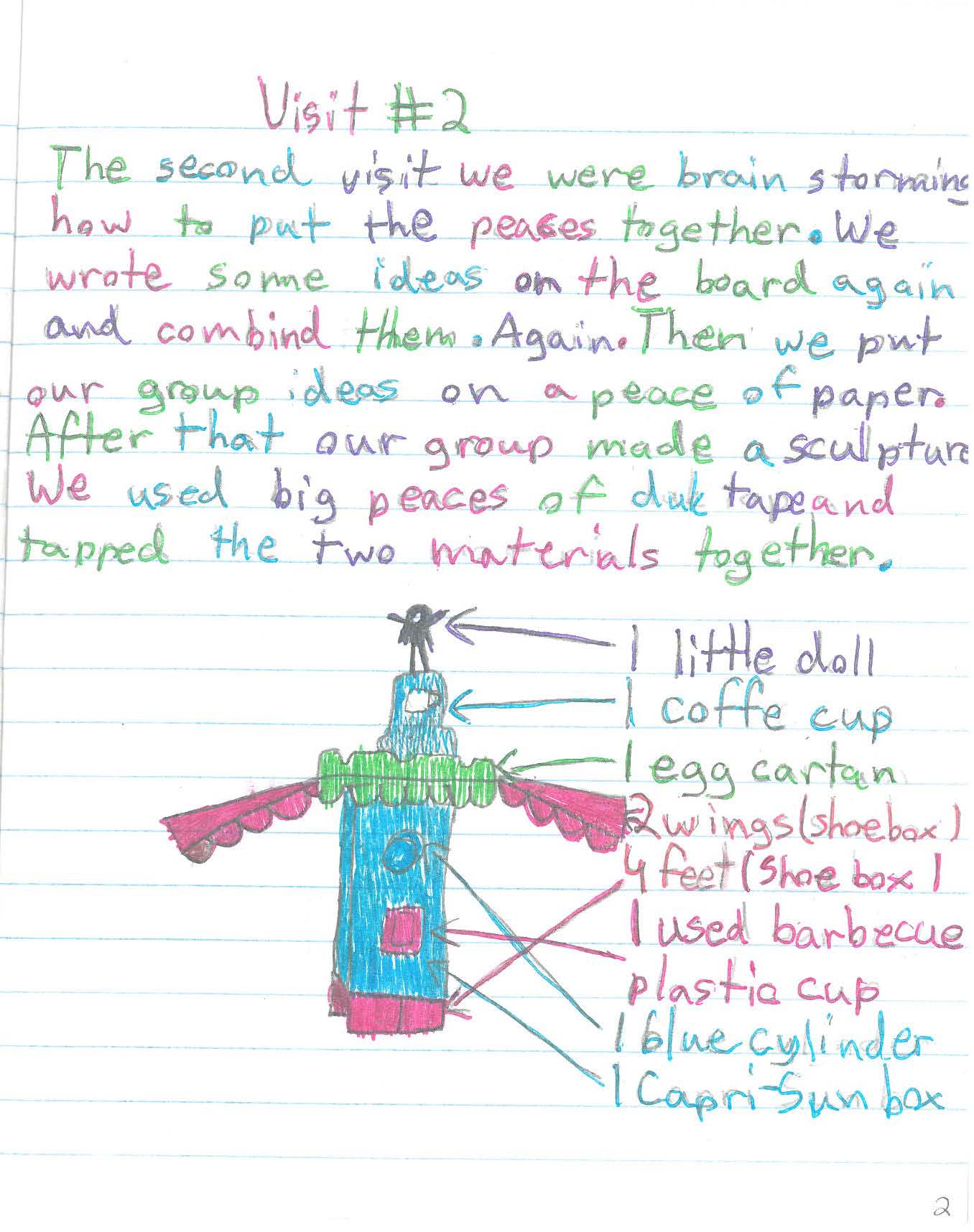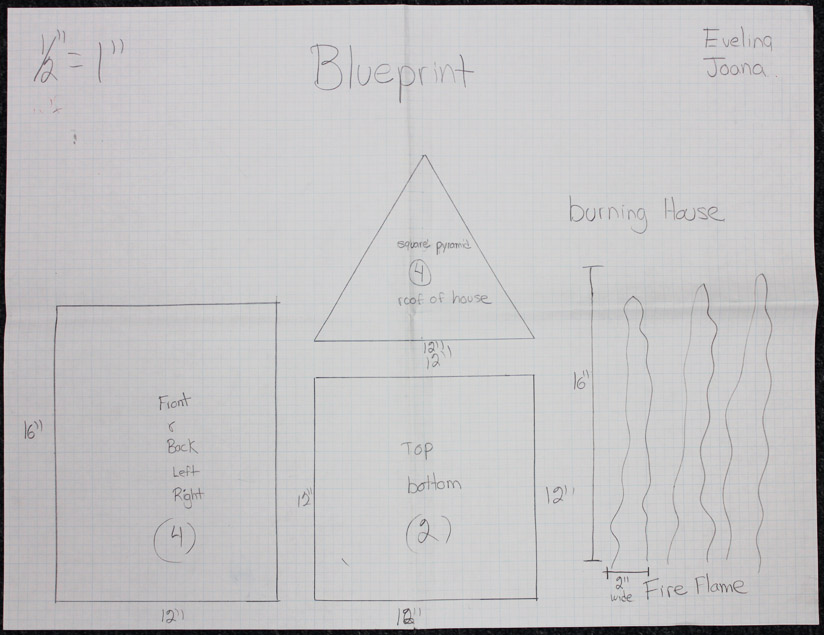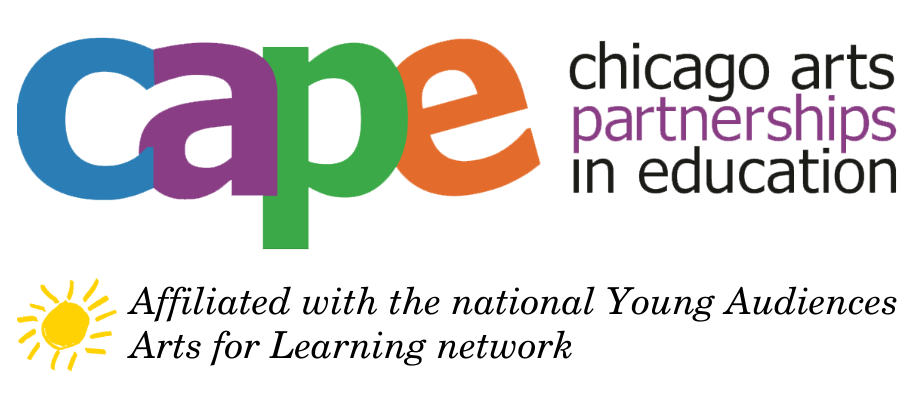PAIR Project Curriculum Example: Visual Arts at Swift and Thorp Elementary Schools
This curriculum guide documents work that occurred with two 4th grade classrooms at Swift and two 4th grade classes at Thorp during the final year of the PAIR project (2008-2009). Visual Arts teaching artists Juan-Carlos Perez worked with Swift and Thorp schools for all three years of the PAIR Project. While CAPE had been previously involved to some degree in professional development for teachers from Swift, the PAIR Project was both schools’ first experience with CAPE-supported teacher-artist partnerships.
School Details:
George B. Swift Specialty School
- Kindergarten through 8th grade
- Located in the Edgewater neighborhood
- Fine and Performing Arts Magnet Cluster Program (FPAMCP) school, with Magnet Cluster Lead Teachers (MCLTs) for Visual Art and for Music
Ole A. Thorp Scholastic Academy
- Kindergarten through 8th grade
- Located in the Portage Park neighborhood
- Math and Science Magnet Cluster Program school, with Magnet Cluster Lead Teachers for Math and for Science
Additional information about the work at Swift and Thorp
- Visual art and dance/theatre were integrated into math units for 4th, 5th, and 6th grade classes at both schools
- The same two artists worked for all three years of the project at both schools
- Each artist spent 8-10 sessions in each classroom, each year of the project
Project Foundations
Big Idea: Problems
Inquiry Question: How can students learn about problem solving by taking a social issue and moving towards action as they take a 2-d blueprint and create from it a 3-D reality that encompasses that notion of action?
Further discussion: It was important to the teachers and the artist to help students move from the abstract (broad social problems and 2-dimensional sketches) to the concrete (taking action against those social problems and creating 3-dimensional sculptures in a way that would maintain the integrity and accuracy of their 2-dimensional plans). The teachers also recognized the need for their students to gain experience in collaborative skills such as listening to peers, changing ideas, and compromising, and so individual and group work was carefully planned to address that need.
Project Narrative
For this project, the teachers and teaching artist planned out a scaffolded approach to the work. The students were guided through the project in a way that helped them understand the relationships between abstract and concrete, 2-dimensional and 3-dimensional space and shapes, and thoughts, plans, and actions. Ongoing emphasis was placed on math concepts such as scale, measurement, and shapes, and how, when, and why one would choose different tools and materials for a math problem or an art piece.
The project unfolded in the following steps:
- The classes discussed initial ideas about sculptures and sculpting (sculpting by subtraction or addition, use of recycled materials, tools and techniques involved in sculpting) and explored the process of sculpting in small groups
- Students explored methods of converting 2-dimensional drawings to 3-dimensional shapes
- They looked at how blueprints and models can be used to design and execute sculptures
- The students learned how to create their own blueprints with an emphasis on planning, measurement, and scale so as to successfully translate the blueprints to a full-scale 3-dimensional form
- In small groups, students determined which materials would work the best for their full-scale sculptures and articulated their needs to the artist and teachers
- Students combined their new math skills and understanding of different art materials to create full scale sculptures from blueprints
- At each school, classes would have a final sharing event where all their work was presented for other students and teachers to see and learn about

One student’s journal entry about creating her first exploratory group sculpture

A student learns to construct a 3-dimensional form from a 2-dimensional drawing

One group’s final blueprint

The same group’s three-dimensional structure nears completion
Project Reflections
In interviews that occurred after this project had concluded, Juan-Carlos Perez and the participating teachers repeatedly remarked on their students’ struggle with but ultimate ability to understand the relationships between two dimensionality and three dimensionality. Through hands on exploration, the students were able to master skills and techniques of scale, measurement, and transference.
Teachers also consistently noted in reflections on project that this particular project allowed their students to develop important social skills, such as listening to their peers, collaboration through sharing, adapting ideas and plans, and accepting others’ idea. The teachers also recognized ways in which the arts integrated math work lead to new success by students who normally did not excel in regular classroom activities.
A PAIR teacher reflects on her students’ learning through arts integration:
“They enjoy it, so they’re more eager to do the work. And the concepts, I believe, are learned even better. Just by taking the test, I would hear them refer to, “Oh, that’s what we did with Mr. Juan Carlos, or we did with Miss Jessica!” […] There was an ISAT problem where they needed to draw a perimeter […] and a lot of the kids said, “Oh, that’s like the practice we did with Mr. Juan Carlos,” or they were referring to, “That’s what it means, right! What we were doing when we were dancing. The perimeter is the outside of the octagon!” and things like that. So to them it was like a flashback of what they did, and then they would get the concepts, so I saw a lot of kids doing that and remembering.”
A PAIR teacher describes how all her students were able to find success in the PAIR project, regardless of how they were usually categorized by standardized test scores:
” …This is part of the program where I see that they’re integrated, and you can’t really tell the difference [between students identified as “High”, “Average”, or “Low” by standardized test scores]… You don’t know the difference if you walk into a classroom, and you give each and every student the same opportunity to exceed on different levels. Because they chose their shape, they chose their sculpture, they chose their concern. And the best thing, without even knowing they were learning, they were learning. At different levels and at their own capacity. […] I would love to continue this program because, like I said, it’s a program where kids are not labeled, kids are not distinguished. They’re all enjoying it to their own capacity. They’re all being successful in one sense or the other. And that’s the best thing.”
Illinois State Goals (as of 2009) addressed by this project
Math:
- 7.A.1a: Measure length, volume and weight/mass using rulers, scales and other appropriate measuring instruments in the customary and metric systems.
- 7.B.1a: Given a problem, describe possible methods for estimating a given measure.
- 9.A.1a: Identify related two- and three- dimensional shapes including circle-sphere, square-cube, triangle-pyramid, rectangle-rectangular prism and their basic properties.
- 9.A.1b: Draw two-dimensional shapes.
- 9.A.2a: Build physical models of two-dimensional and three-dimensional shapes
- 9.B.1a: Identify and describe characteristics, similarities and differences of geometric shapes.
- 9.B.1c: Identify lines of symmetry in simple figures and construct symmetrical figures using various concrete materials.
Language Arts:
- 4.A.1b: Ask questions and respond to questions from the teacher and from group members to improve comprehension.
- 4.B.1: Participate in discussions around a common topic.
Fine Arts:
- 25.A.1d: Visual Arts- Identify the elements of line, shape, space, color and texture; the principles of repetition and pattern; and the expressive qualities of mood, emotion and pictorial representation.
- 26.A.1e: Visual Arts- Identify media and tools and how to use them in a safe and responsible manner when painting, drawing and constructing.
- 26.B.1d: Visual Arts- Demonstrate knowledge and skills to create visual works of art using manipulation, eye-hand coordination, building and imagination.
Plan a CAPE Field Trip
Visit CAPE and learn more about our research: join us for a casual, one-hour info session that we call the CAPE Field Trip. You’ll tour our office, learn about our impact on students, teachers, and communities, and meet some of our staff members and partners.


